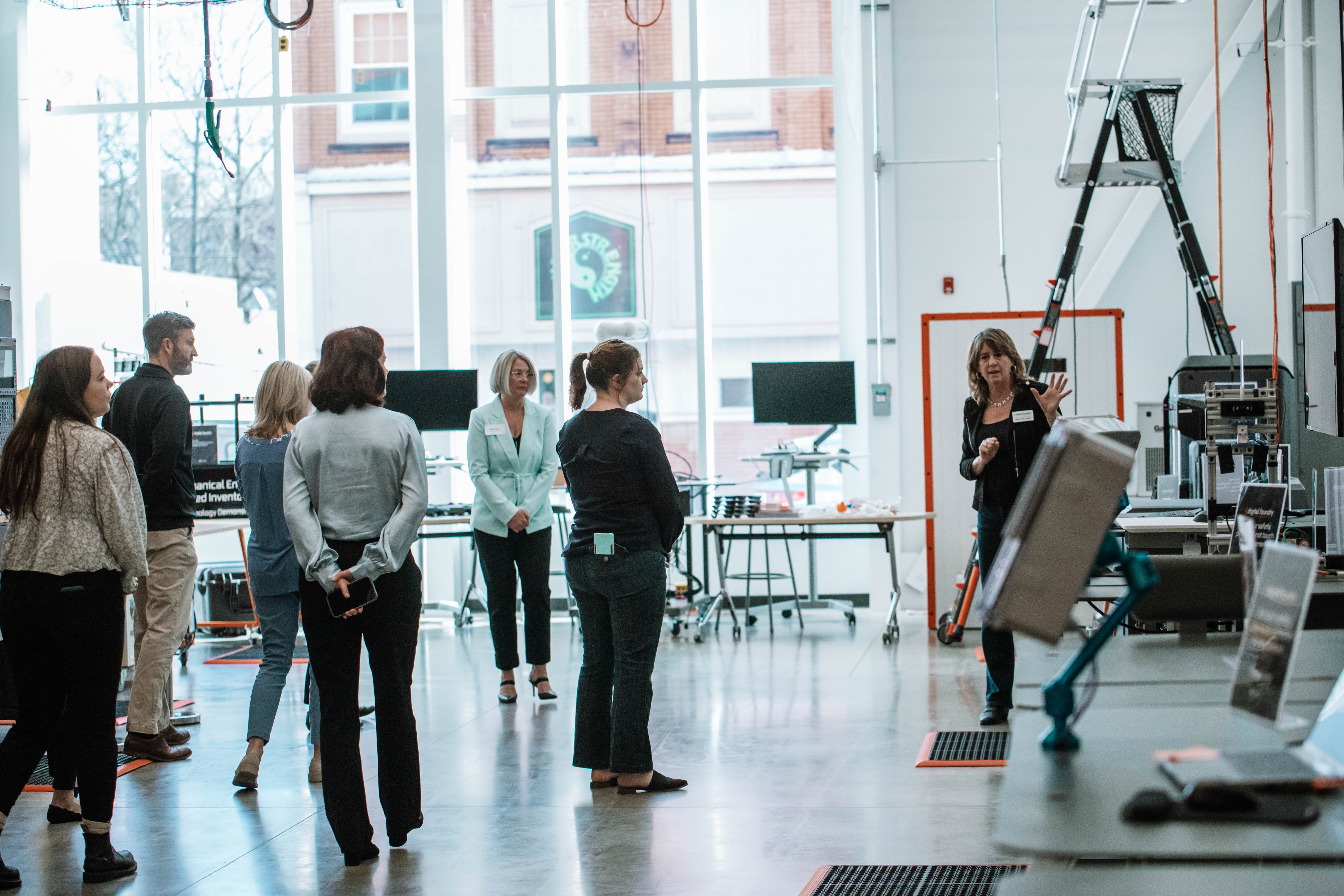Empowering a Digital Transformation Culture
Embracing digital transformation in manufacturing is as much about culture as technology. While implementing digital tools and systems is often easier, creating a culture that supports innovation and change can be more challenging. Success hinges on strong leadership, committed to both guiding employees and navigating disruptions. Cross-functional teams must engage collaboratively, and communication must remain clear, keeping everyone aligned with organizational goals. Building this culture ensures a smoother transition to a digital manufacturing environment.

Leadership Commitment and Support
The foundation of any digital transformation is leadership that actively champions both the technology and the people driving the change. Leaders play a pivotal role by promoting a culture of adaptability, encouraging employees to embrace new tools, systems and methodologies. This type of leadership isn’t about dictating change but supporting it—nurturing a mindset where employees feel empowered to innovate, take calculated risks and learn from failures.
For many organizations, digital transformation represents a major cultural shift, moving away from traditional processes to more agile, technology-driven approaches. Leaders must guide their teams through this transition with transparency, offering clear communication about why changes are necessary, how they’ll improve operations and how they align with broader company goals.
Cross-Functional Collaboration
A successful digital transformation cannot happen in isolation. To be effective, cross-functional teams—ranging from IT to production, HR to finance—must work together. This collaboration helps break down silos, allowing for seamless integration of new technologies and strategies across departments. By ensuring everyone is on the same page, organizations can avoid roadblocks and inefficiencies caused by misaligned priorities or a lack of communication.
For instance, integrating digital manufacturing solutions, such as smart sensors or machine learning algorithms, requires input from both Operational Technology (OT) and IT specialists. When these teams collaborate, they can optimize systems that not only improve productivity but also reduce downtime and operational costs, while remaining aligned with security protocols. When different departments work together, digital transformation becomes a holistic, company-wide initiative.
Communication and Alignment
Without clear, consistent communication, even the most well-planned digital transformation efforts can fall short. Communication must flow freely from leadership to every level of the organization, ensuring that all employees understand the transformation’s goals and how they contribute to the broader vision.
It’s essential that everyone is aligned around the same goals, whether that’s improving production efficiency, reducing waste, or better-serving customers. When teams are aligned, they’re more likely to pull in the same direction, fostering a unified effort to achieve success. Alignment also helps ensure that the company’s digital transformation efforts remain focused, avoiding scope creep or distractions that can derail progress.
The Role of Technology in Cultural Change
While culture is the harder part of digital transformation, technology acts as the enabler. Whether it’s implementing automation, integrating IoT solutions, or utilizing cloud-based platforms, digital tools provide the framework to support new ways of working. However, technology alone won’t drive transformation—employees need to be comfortable using these tools and understand how they fit into their daily workflows.
Companies can facilitate this by offering comprehensive training programs and continuous learning opportunities that allow employees to upskill. The Digital Foundry’s training programs, for example, expose current and future workers to the essential skills needed for smart manufacturing and digital operations. When employees feel equipped to handle new technology, they’re more likely to embrace change and contribute to a digitally-driven company culture.
Conclusion
Building a culture that supports digital transformation requires a delicate balance of leadership, communication, collaboration and technical know-how. While technology may be the enabler, the true challenge lies in creating an organizational mindset that welcomes innovation and disruption. At the Digital Foundry, we understand that the future of manufacturing depends not just on advanced tools but on the people and culture that use them. Through our technical training and education programs and technology assessment and de-risking services, we’re helping manufacturers build the skills, mindsets and technical confidence needed to thrive in a rapidly evolving digital landscape. Contact us today to learn more: https://digitalfoundrynk.com/contact/.

